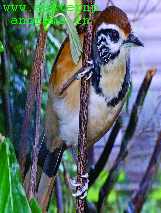Archives
Myst-erious Jatinga Valley
Myst-erious Jatinga Valley
The scenic Jatinga Valley, 8 km away from Haflong, the district headquarters of Dima Hasao district (formerly North Cachar Hills) of Assam, with its lush green forests and the free running waters is a slice of paradise with its spectacular variety of birds and as such is a veritable treasure-trove for bird watchers. The valley has been known for decades for its mysterious bird – phenomenon during mid August to early November when on dark nights the mist and fog borne by a south-westerly wind passes over Jatinga along the valley towards the North East, the birds of varied species flock to the region. Besides avian creatures from Bangladesh, Pakistan, Siberia and the Indian Oceanic birds from other parts of the North East also fly across the valley. Often attracted by lights or burning objects, the birds plunge towards these attractions which is taken advantage of by the villagers who consider these migratory birds as delicacies.
lush green forests and the free running waters is a slice of paradise with its spectacular variety of birds and as such is a veritable treasure-trove for bird watchers. The valley has been known for decades for its mysterious bird – phenomenon during mid August to early November when on dark nights the mist and fog borne by a south-westerly wind passes over Jatinga along the valley towards the North East, the birds of varied species flock to the region. Besides avian creatures from Bangladesh, Pakistan, Siberia and the Indian Oceanic birds from other parts of the North East also fly across the valley. Often attracted by lights or burning objects, the birds plunge towards these attractions which is taken advantage of by the villagers who consider these migratory birds as delicacies.
In order to prevent this killing, the forest department initiated awareness campaigns among the villagers to address the problem.
According to Thomas Siangshai, the man who looks after the bird watch tower at Jatinga, even 6 years ago, not less than 300 birds at a time could be seen flying in the ‘mysterious’ and ‘magnetic zone’ which was dubbed by ornithologists.
Of course, their number has dwindled to a bare 60 to 70 birds today. Though the killing of late has abated, he feels that a total check on it will bring back the lost glory of this avian zone. He attributed it to a growing trend of ‘suicides’ among the birds and the desperate acts of villagers to kill them which was once carried out on a large scale due to the lack of any awareness programme.
 It was way back in the 1980s that a large number of tourists and a steady stream of naturalists and ornithologists used to visit the valley which was then a tourist destination. Thomas Siangshai is pained at the increasing number of birds being killed and lack of serious and sincere efforts of the state government, particularly the Forest Department, to prevent their killing. In fact, the entire valley is a mute witness to the killing. He fears that a day will come when not even a single bird will be sighted in the region.
It was way back in the 1980s that a large number of tourists and a steady stream of naturalists and ornithologists used to visit the valley which was then a tourist destination. Thomas Siangshai is pained at the increasing number of birds being killed and lack of serious and sincere efforts of the state government, particularly the Forest Department, to prevent their killing. In fact, the entire valley is a mute witness to the killing. He fears that a day will come when not even a single bird will be sighted in the region.
Siangshai fondly remembers HP Phukan, the Divisional Forest Officer stationed there between 1982 and 1984 who was particularly concerned by the suicide phenomenon and who took up awareness campaigns against it and conveyed the message to the hamlets inhabited by various tribes. It was during his time that the watch tower was raised to keep a watch on the birds in the valley.
At his initiative, a high voltage beaming light was installed which is still present today to guide the birds away from the burning objects of the villagers.
Among the birds which fly to this zone include the malaya bittern, the little white egret, the hill patridge, the kalij pheasant, the green pigeon, the emerald gold, the white breasted kingfisher, the niddy kingfisher, the paradise fly catcher and the necklaced laughing thrusts. These birds twitter all through the year in Jatinga and during the mysterious weather conditions, these are joined by the flocks of birds from the North East and other regions.
Shankar Hazarika, DFO of Haflong, when contacted said “It is wrong to say that the bird suicides continue on a large scale. Rather, all out efforts are going on to make the awareness campaigns among the villagers more incisive and penetrating.” He is confident that birds will no longer be unsafe and Jatinga will again be humming and buzzing with a steady tourist flow. He revealed that the action plan for the development of Jatinga as a tourist resort has been submitted to the state government and is awaiting its approval and sanction. He at the same time said that naturalists and ornithologists continue to visit the valley in order to closely study the bird phenomenon.
World renowned ornithologists like Dr. Salim Ali and S. Sengupta visited this place. Recently, four scholars from Patiala University, Punjab, were present to study the avian behaviour and in the course of their research, they discovered 11 new species of moths. Hazarika is optimistic that with the end of insurgency and restoration of normalcy in the district, Jatinga with the cooperation of the state government and civil bodies can become a tourist destination.

